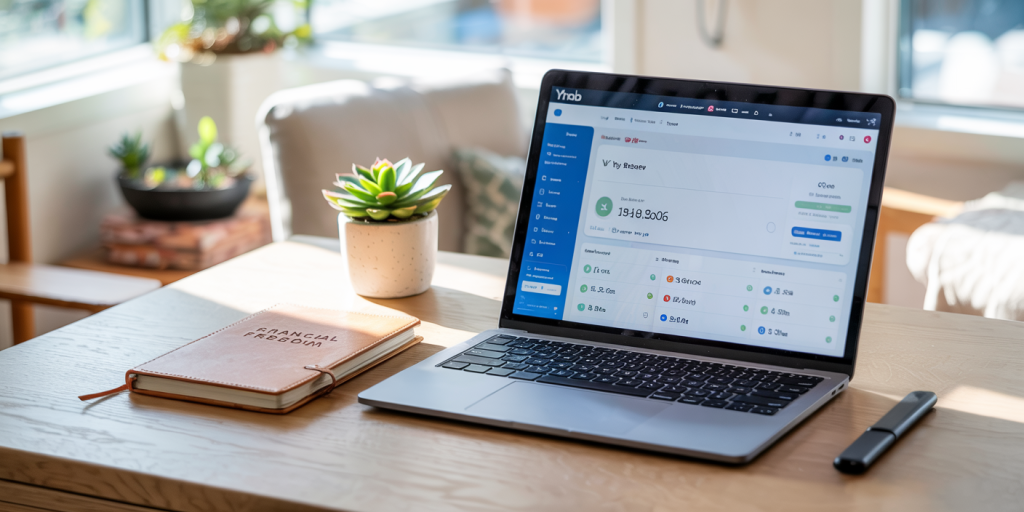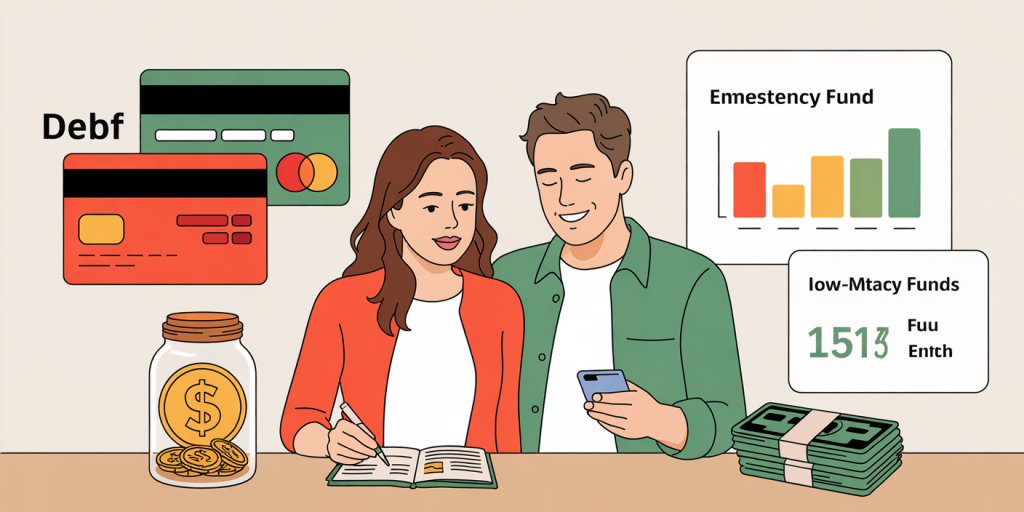Financial Minimalism: How to Live Better with Less Money
In an age characterized by relentless consumerism and increasing financial pressures, many individuals are seeking ways to live more intentionally with less. Financial minimalism is a lifestyle and mindset focused on reducing unnecessary expenses, simplifying money management, and prioritizing meaningful spending. This approach not only alleviates financial stress but also can lead to enhanced well-being and greater freedom. Rather than simply cutting costs arbitrarily, financial minimalism encourages thoughtful evaluation of one’s resources, ambitions, and values to cultivate a healthier relationship with money.
The concept of minimalism isn’t new, yet its application to finances has gained momentum in recent years due to growing awareness around sustainable living and effective money management. With global debt levels reaching record highs—U.S. household debt surpassed $17 trillion in 2023 (Federal Reserve)—many are recognizing the inadequacies of the traditional consumer debt-driven lifestyle. Embracing financial minimalism means learning to live with less money wisely, focusing on smart spending, saving, and investing habits, ultimately leading to financial security and peace of mind.
Understanding the Core Principles of Financial Minimalism
At its core, financial minimalism advocates stripping away non-essential expenditures and focusing only on what enriches life. This entails a clear distinction between needs and wants, a fundamental financial concept that is often overlooked. For example, rather than remodel a kitchen annually, financial minimalists might prioritize experiences like travel or education that bring enduring satisfaction. The principle is not to deprive oneself but to spend consciously and align expenses with deeply held values.
Practical application begins with budgeting as a strategic tool rather than a restrictive framework. The envelope budgeting method or zero-based budgeting helps allocate every dollar with intention, ensuring funds serve the highest purpose. By tracking spending meticulously, individuals identify wasteful habits—like excessive dining out or redundant subscriptions—and reinvest savings into meaningful goals, whether paying off debt or building emergency funds.
Reducing Expenses Without Compromising Quality of Life
The most significant challenge many face when adopting financial minimalism is reducing expenses without feeling deprived. However, this mindset shift emphasizes that frugality does not equate to low quality; it means valuing quality over quantity. For instance, buying fewer but better-quality clothes reduces long-term costs and environmental impact, as demonstrated by a 2022 study from the Global Fashion Agenda which reported that high-quality garments can last 5-10 times longer than fast fashion items.

Utility costs provide another practical area for meaningful reductions. Transitioning to energy-efficient appliances, using programmable thermostats, or switching to LED lighting has been shown to reduce monthly energy bills by up to 30% (U.S. Department of Energy). These measures not only save money but contribute to environmental sustainability—a core value often aligned with minimalist philosophies.
Consider Jane, a freelance graphic designer who adopted financial minimalism by analyzing her monthly expenses and cutting back on non-essential services. She canceled four out of seven streaming services she rarely used, saving $40 per month. Additionally, she consolidated her grocery shopping to one trip per week, reducing impulse purchases and food waste. Over a year, these adjustments saved her roughly $700, enabling her to invest in a professional development course, enhancing her career prospects.
| Expense Category | Typical Monthly Spending | Minimalist Approach | Savings Estimate |
|---|---|---|---|
| Streaming Services | $60 | Cancel 4 services | $40 |
| Groceries | $400 | Plan shopping trips | $50 |
| Dining Out | $150 | Reduce frequency | $75 |
| Utilities | $120 | Energy-efficient tools | $36 (30% reduction) |
| Subscription Boxes | $30 | Cancel unnecessary boxes | $30 |
| Total Savings | $231/month |
Building Financial Resilience through Minimalism
Financial minimalism naturally encourages the accumulation of savings due to disciplined spending habits. Establishing an emergency fund is often the first step to achieving financial resilience. According to a 2023 survey by Bankrate, 28% of Americans have no emergency savings at all, underscoring the necessity of this financial buffer. Minimalists prioritize building three to six months’ worth of living expenses in an easily accessible account, reducing vulnerability to unexpected events such as job loss or medical emergencies.
Moreover, minimalist strategies reduce reliance on credit and high-interest debt, improving overall credit scores and financial health. Take the example of Mark and Lisa, a couple burdened by $20,000 in credit card debt who embraced financial minimalism in 2021. By switching to a cash-only system for discretionary expenses and focusing additional funds toward monthly debt payments, they paid off their balance within 18 months. Their disciplined approach helped restore their credit scores to 780 and 765, respectively, enabling them to secure a favorable mortgage rate when purchasing their first home.

Smart Investing on a Minimal Budget
Contrary to popular belief, financial minimalism does not preclude investing. Minimalists focus on strategic, low-maintenance investment vehicles that require minimal time commitment and reduce fees—such as index funds or robo-advisors. The passive investment approach, favored by many financial minimalists, aligns with the ethos of simplicity and patience.
For example, Vanguard’s Total Stock Market Index Fund (VTSAX) offers broad market exposure with expense ratios as low as 0.04%. Over decades, such investments have historically yielded average annual returns of around 7%, outpacing inflation and allowing wealth to compound. Instead of chasing individual stock trends or complex strategies, financial minimalists keep investing simple and systematic to build long-term wealth.
Automating investments using direct debit or payroll deduction further reinforces this habit. A 2019 study by the National Bureau of Economic Research found that individuals who automated savings were 15% more likely to meet retirement goals compared to those who manually transferred funds.
Developing Mindful Spending and Consumption Habits
Overconsumption is culturally ingrained, often fueled by social media and advertising that promote constant upgrading and accumulation. Financial minimalism encourages mindfulness as an antidote, cultivating awareness about spending triggers and intentional purchasing decisions. Before buying, minimalists may ask themselves questions such as “Do I need this?”, “Will this add value?” or “Can I borrow or rent instead?”.
The sharing economy provides practical examples supporting mindfulness. Services such as tool libraries, clothing rental platforms, and car-sharing apps enable individuals to access what they need only when necessary, eliminating ownership costs. For instance, Zipcar reported that members drive 40% fewer miles and own 43% fewer cars, showcasing how shared resources contribute to savings and environmental benefits.
A real-life case study is Brian, who reduced his spending on home improvement tools from $1,500 to close to zero by borrowing from a local tool library. This allowed him to complete several projects without buying expensive equipment rarely used, conserving both money and storage space.
The Future of Financial Minimalism: Trends and Opportunities
The rise of financial minimalism is closely linked to larger socio-economic and technological trends such as digitalization, sustainability, and shifts in work culture. Remote work and gig economies prompt people to rethink commuting costs, office wardrobes, and dining out habits, reinforcing the minimalism mindset in daily finance.
Technological advancements enhance accessibility to minimalist financial tools. Apps designed for budgeting, automated saving, and expense tracking such as YNAB (You Need a Budget) and Mint provide real-time insights, facilitating disciplined money management for users globally. Moreover, fintech innovations in micro-investing allow individuals to invest spare change, lowering barriers to wealth building.
Looking forward, embedded sustainability concerns are likely to propel financial minimalism further into mainstream culture. As climate change awareness rises, consumers’ demand for ethical, sustainable financial practices grows. Financial minimalism aligns perfectly with this holistic approach to responsible living—reducing waste, fostering conscious consumption, and promoting financial security.
| Trend | Description | Impact on Financial Minimalism |
|---|---|---|
| Remote Work Expansion | Increase in work-from-home opportunities | Lowers commuting expenses, casual dress codes |
| Fintech Growth | Budgeting and investing apps on the rise | Improves accessibility and automation |
| Climate Awareness | Growing concern about environmental impact | Encourages sustainable spending habits |
| Gig Economy | Rise in freelance and part-time work | Variable income management techniques |
| Sharing Economy | Popularity of renting and sharing resources | Reduces ownership costs and consumption |
Adopting financial minimalism is more than a money-saving strategy; it is a cultural shift toward intentional, value-driven living. As individuals and societies navigate economic uncertainties, this approach offers a compelling path to enhanced financial security, mental clarity, and life satisfaction. By embracing less as more, people can unlock opportunities to live better with less money, transforming challenges into empowering choices.


Hi, this is a comment.
To get started with moderating, editing, and deleting comments, please visit the Comments screen in the dashboard.
Commenter avatars come from Gravatar.